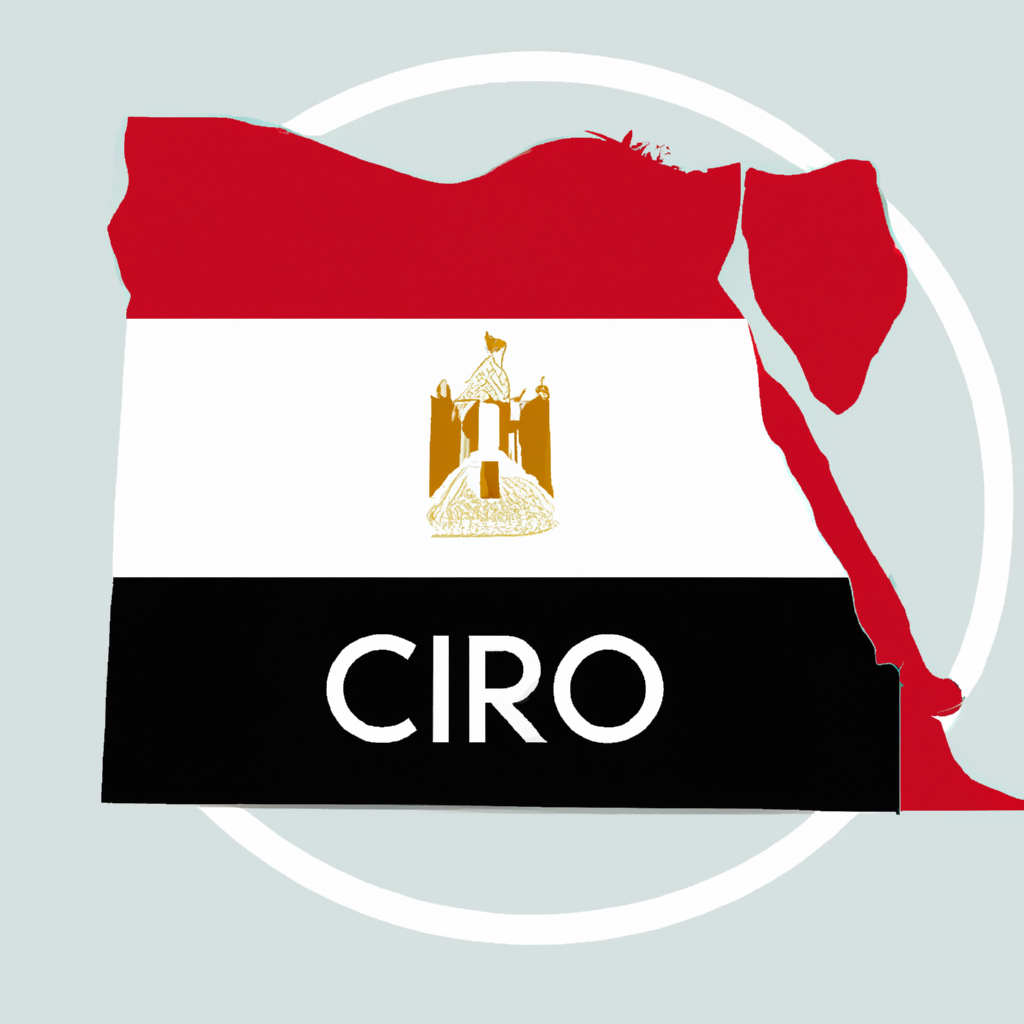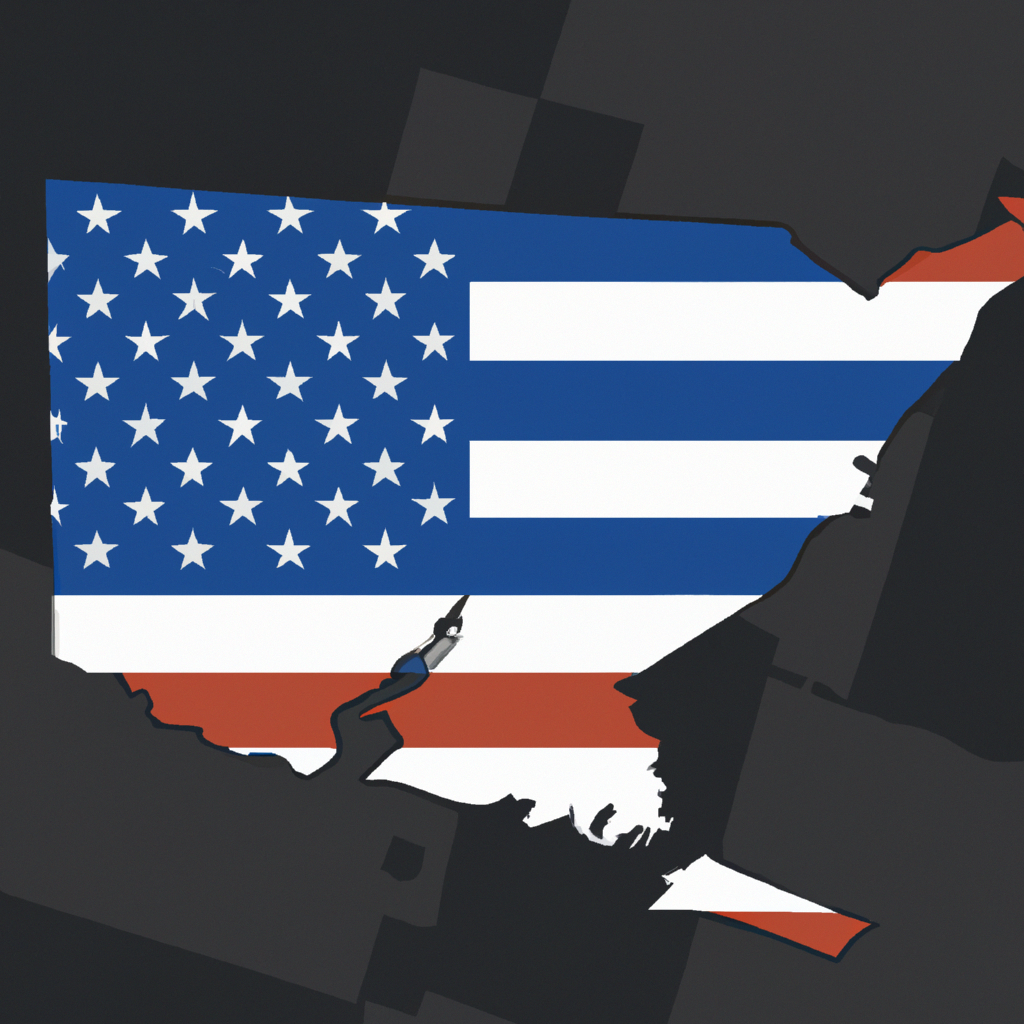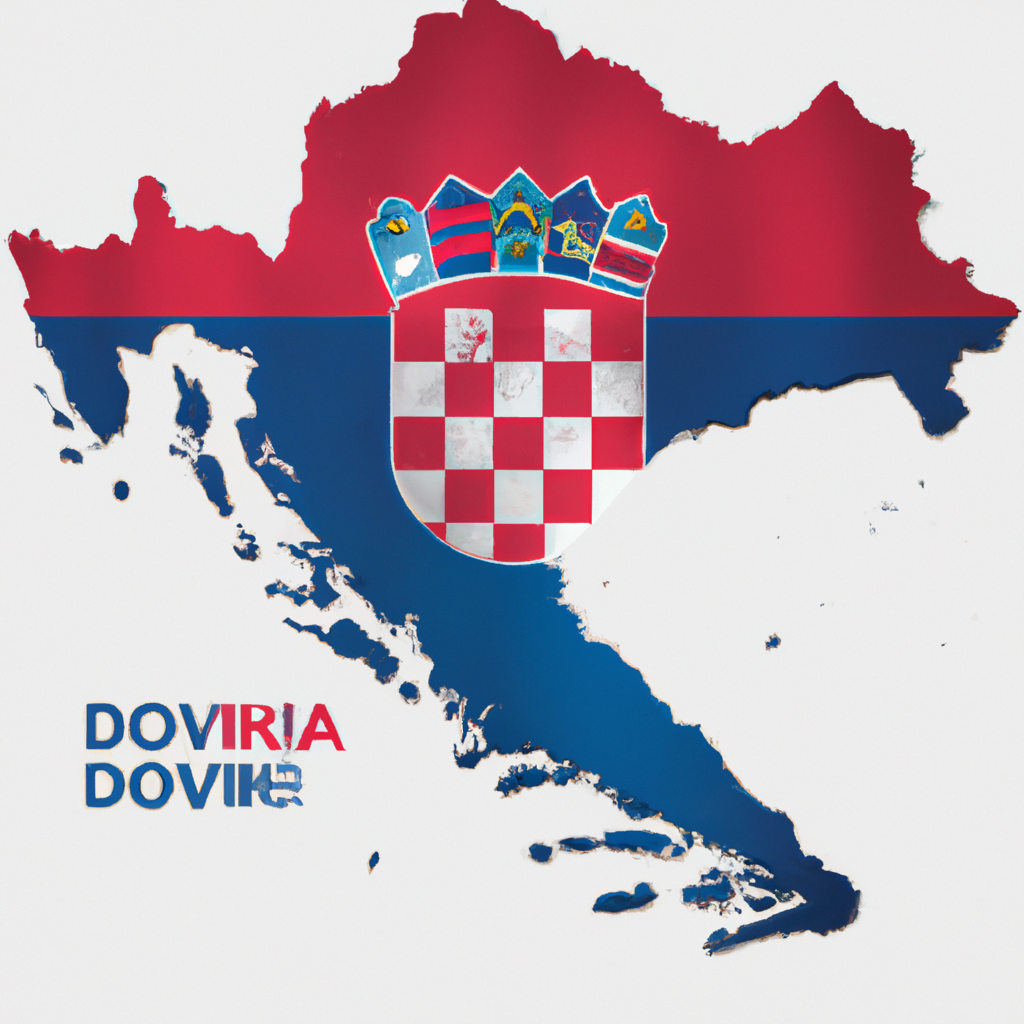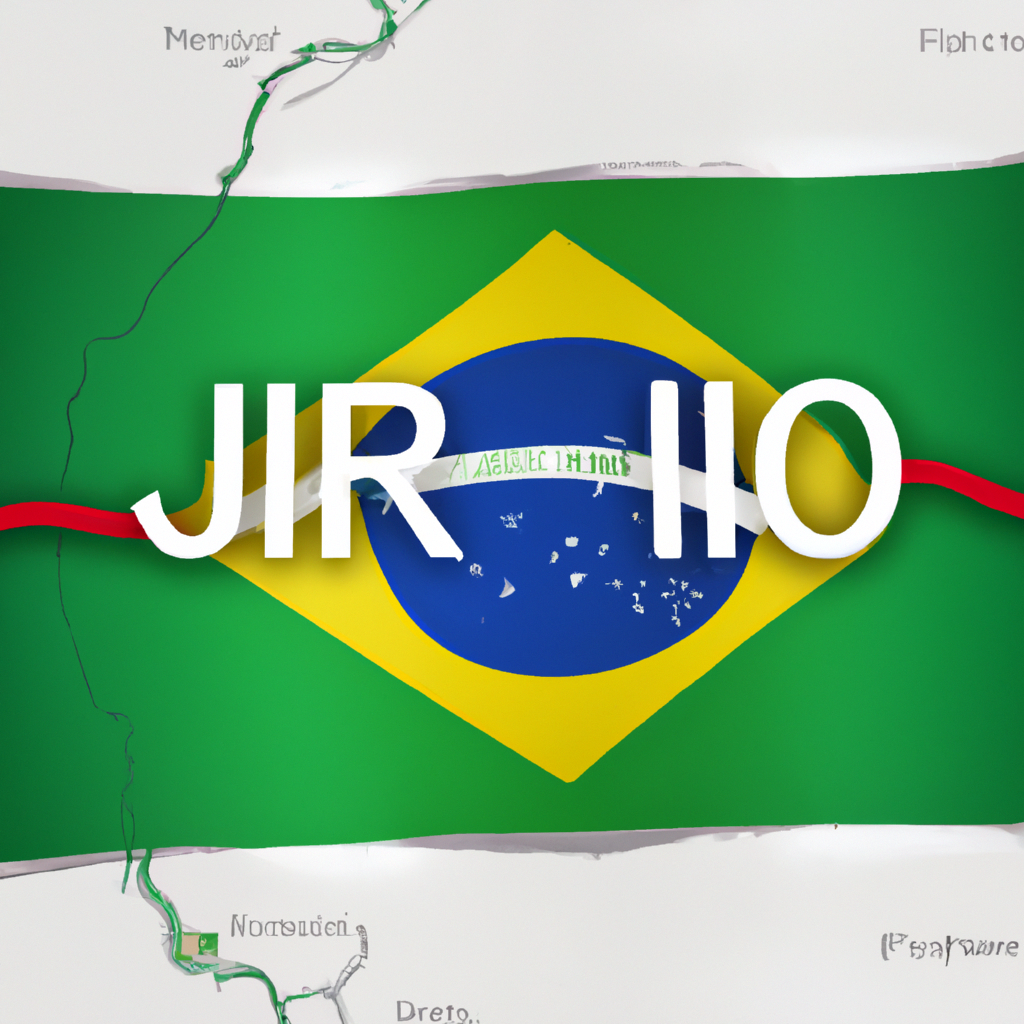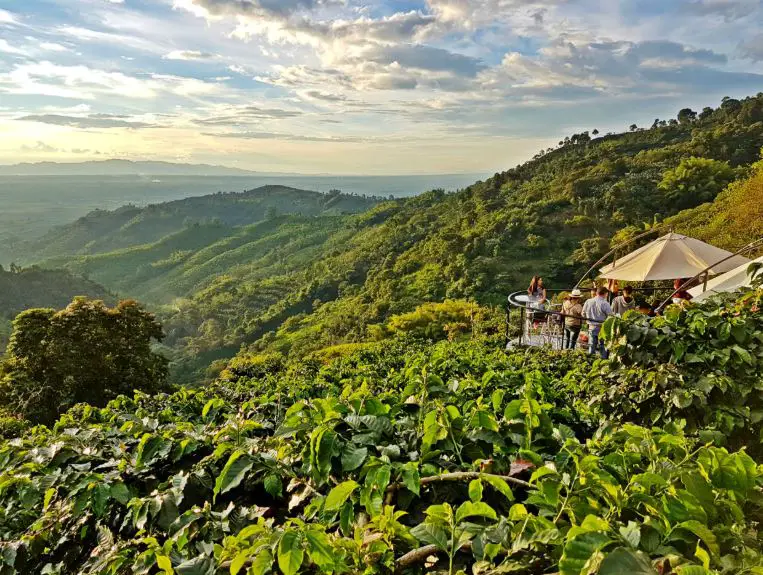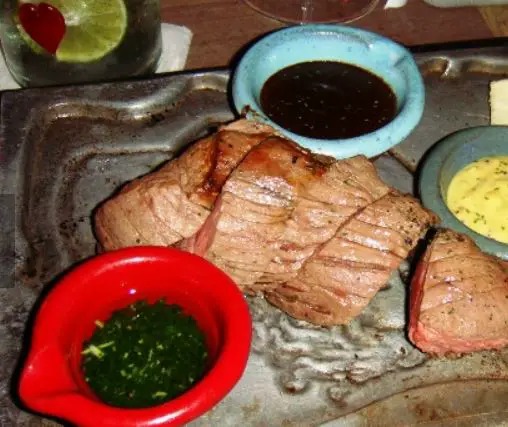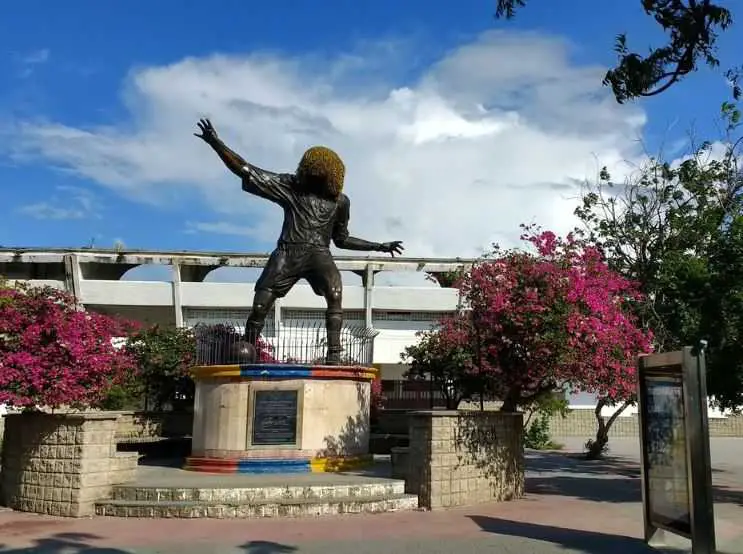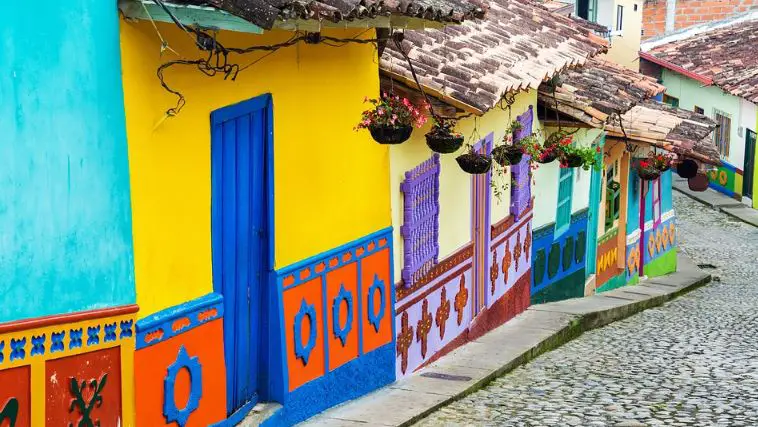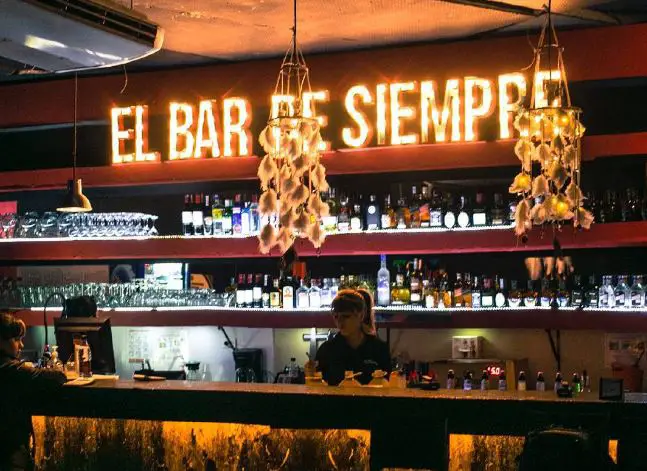Medellín, Colombia: Interesting Facts,History, Things to do,Why to Visit
Post ByAdequate Travel
Medellín is a rich city with an interesting history, lots of fun things to do, and lots of interesting facts to learn. It has so much to offer from its modern culture and trendsetting architecture to its traditional past and fascinating natural beauty. It is a place for all types of travelers to explore and enjoy. From vibrant city life, special cuisine, outdoor adventure, and entertainment for children - Medellín has something for everyone. If you're looking for an interesting getaway with endless opportunity to explore, Medellín should be your top pick. Here you will find interesting facts, history, things to do, and even reasons why to visit Medellín. Whether you're looking for educational activities; sightseeing; shopping; outdoor activities; or just a change in scenery - Medellín has it all. So come to Medellín and experience it all!
Colombia is a diverse country located in South America. It is known for its vibrant culture, stunning natural landscapes, and complex history. The country has a population of around 50 million people and is characterized by a mix of indigenous, African, and European influences.Colombia is home to diverse ecosystems, including the Andes Mountains, Amazon rainforest, and Caribbean and Pacific coastlines. This biodiversity makes it a popular destination for eco-tourism and outdoor activities such as hiking, birdwatching, and surfing.However, Colombia has faced various challenges, including a long-running armed conflict with guerrilla groups and drug cartels. In recent years, the country has made significant progress in bringing about stability and peace through initiatives such as the signing of a historic peace deal with the Revolutionary Armed Forces of Colombia (FARC) in 2016.Colombia is also known for its rich cultural heritage, with a lively music scene that includes traditional rhythms like cumbia and vallenato, as well as popular genres like salsa and reggaeton. The country is also famous for its coffee production, being one of the largest exporters of high-quality coffee worldwide.In terms of economy, Colombia has been experiencing steady growth in recent years, thanks to a combination of factors such as increased investment, improved security, and economic diversification. The country has a mixed economy, with key sectors including mining, agriculture, manufacturing, and services.Overall, while Colombia has faced its share of challenges, it is a country undergoing positive changes and offering a range of experiences and opportunities for both residents and visitors.Explore the popular places in colombia, and immerse yourself in its vibrant culture.
Interesting facts
Geographical Diversity
Colombia is a country known for its remarkable geographical diversity. It is located in the northwest corner of South America and is endowed with a wide array of landscapes including coastal areas, Andean mountain ranges, the Amazon rainforest, and even a portion of the world's second-largest river, the Amazon River. The country is also home to the Sierra Nevada de Santa Marta, a mountain range with peaks reaching over 5,700 meters (18,700 feet) above sea level.
Examples of Colombia's geographical diversity include the Caribbean coast, which is known for its stunning white sandy beaches and turquoise waters, and the Pacific coast, famous for its dense rainforests and unique wildlife. The Andes mountain range traverses the country, providing breathtaking scenery and opportunities for outdoor activities such as hiking and mountaineering.
Coffee Production
Colombia is renowned for its high-quality coffee production. The country's geographical and climatic conditions, combined with the expertise of its coffee farmers, contribute to the production of some of the finest coffee beans in the world. Colombia's coffee industry plays a crucial role in the country's economy and cultural heritage.
The Coffee Cultural Landscape, a UNESCO World Heritage site, is a prime example of Colombia's coffee production. This region consists of lush coffee plantations, picturesque villages, and traditional coffee farms known as fincas. Visitors can learn about the coffee production process and even enjoy a cup of freshly brewed Colombian coffee while immersed in the beautiful landscape.
Biodiversity
Colombia holds an astonishing level of biodiversity, making it one of the mega-diverse countries in the world. It is home to a significant number of plant and animal species, many of which are exclusive to the region. The country's varied ecosystems, including the Amazon rainforest, paramos, mangroves, and cloud forests, contribute to its rich biodiversity.
Colombia is known for its incredible bird diversity, with over 1,900 recorded bird species. The country boasts the highest number of bird species in the world, including the colorful Andean cock-of-the-rock and the iconic harpy eagle. Additionally, Colombia is home to numerous species of orchids, butterflies, amphibians, and reptiles.
Cultural Heritage
Colombia's cultural heritage is diverse and fascinating. The country's history is a blend of indigenous, European, and African influences, resulting in a vibrant and unique cultural tapestry. Colombia celebrates a wide range of festivals and traditions, each showcasing different aspects of its cultural heritage.
One notable example is the Barranquilla Carnival, considered one of the largest carnivals in the world. This vibrant event features colorful parades, music, dance, and elaborate costumes. Another cultural gem is the traditional Colombian music genre of vallenato, which originated in the Caribbean region and combines African, indigenous, and European musical elements.
From museums to parks,colombia tourist attractions offer something for everyone, making it a versatile destination for all type of tourists.History of Colombia
The history of Colombia is rich and diverse, shaped by various indigenous groups, European colonization, and periods of political instability. Here are some key points to understand the history of Colombia:
Pre-Colombian Period
- Colombia was originally inhabited by various indigenous groups, such as the Muisca, Quimbaya, and Tairona.
- These indigenous communities had established advanced civilizations, characterized by impressive agricultural systems, goldworking, and intricate social structures.- The arrival of the Spanish conquistadors in the late 15th century marked a significant turning point in Colombian history.Spanish Colonization
- The Spanish conquistador Gonzalo Jiménez de Quesada led an expedition into Colombia in 1536, establishing the settlement of Santa Fe de Bogotá, which later became the capital of Colombia.
- The Spanish colonization brought significant changes to the indigenous populations, including forced labor, disease, and cultural assimilation.- Colombia became part of the Viceroyalty of Peru and later the Viceroyalty of New Granada, which encompassed modern-day Colombia, Ecuador, Venezuela, and Panama.Independence from Spain
- Influenced by the ideals of the French and American revolutions, Colombians began to strive for independence in the early 19th century.
- On July 20, 1810, a group of Colombian patriots initiated the movement for independence, known as the "Patriotic Junta."- After years of struggle, Colombia, along with other South American countries, finally gained independence from Spain in 1819, under the leadership of Simón Bolívar.- Gran Colombia, a republic comprising Colombia, Venezuela, Ecuador, and Panama, was established as a result of the liberation efforts.Political Instability and Conflict
- The 19th and early 20th centuries were marked by political instability, frequent civil wars, and struggles over power and regional autonomy.
- The nation's divisions eventually led to the dissolution of Gran Colombia in 1831, resulting in the formation of the independent Republic of New Granada, which later became the Republic of Colombia.- The 20th century witnessed significant periods of violence and conflict, including the Thousand Days' War (1899-1902) and the Colombian Conflict, a long-running armed conflict involving guerrilla groups, paramilitary organizations, and government forces.Recent Developments
- In recent years, Colombia has seen positive developments in terms of peacebuilding and economic growth.
- In 2016, the Colombian government signed a peace agreement with the Revolutionary Armed Forces of Colombia (FARC), ending decades of armed conflict.- Colombia has emerged as one of the fastest-growing economies in Latin America, attracting investments and boosting tourism.- Efforts continue to be made to address social challenges, promote inclusive development, and preserve the country's cultural heritage.Overall, the history of Colombia is a complex narrative of indigenous civilizations, colonialism, independence, political struggles, and efforts towards stability and progress. Understanding this history provides insights into the country's cultural diversity, challenges, and ongoing transformation.
Exploring the rich heritage of historical sites in colombia is a journey through time and culture.Famous Things of Colombia
1. Coffee
Colombia is known worldwide for its production of high-quality coffee. The country's unique climate and altitude result in the perfect conditions for coffee cultivation. Colombian coffee is famous for its rich flavor, smoothness, and unique aromas. It is exported all around the world and is a source of national pride for Colombians.2. Emeralds
Colombia is the world's largest producer of emeralds, accounting for approximately 70-90% of global production. The country's mines are known for their high-quality emeralds, with rich green colors and exceptional clarity. Colombian emeralds are highly valued and sought after by jewelry connoisseurs around the world.3. Shakira
Shakira is one of Colombia's most famous and beloved international figures. She is a Grammy Award-winning singer, songwriter, and dancer. Known for her catchy pop songs and electric stage performances, Shakira has achieved global fame with hits like "Hips Don't Lie" and "Whenever, Wherever." She is often recognized as one of the most successful Latin artists of all time.4. Gabriel García Márquez
Gabriel García Márquez was a renowned Colombian writer and Nobel laureate. He is best known for his masterpiece novel, "One Hundred Years of Solitude," which is considered one of the most important literary works of the 20th century. García Márquez's magical realism style has influenced countless writers worldwide, and he is celebrated as one of Latin America's most influential authors.5. Cartagena's Old Town
Cartagena's Old Town is a UNESCO World Heritage Site and one of Colombia's most picturesque destinations. The historic city center is known for its colorful colonial architecture, cobblestone streets, and charming squares. It attracts visitors with its vibrant atmosphere, cultural richness, and well-preserved historical sites, such as the San Felipe Castle and the Palace of the Inquisition.6. Salsa Music and Dance
Colombia is famous for its vibrant salsa music and energetic dance style. Salsa originated in the Caribbean region, but Colombian artists have made significant contributions to its development and popularity. Cali, a city in southwest Colombia, is particularly recognized as the "Salsa Capital of the World" and hosts an annual salsa festival that attracts both national and international dancers.7. Tayrona National Natural Park
Located on Colombia's northern coast, Tayrona National Natural Park is a stunning natural paradise. The park encompasses lush rainforests, pristine beaches, and the majestic Sierra Nevada de Santa Marta mountain range. It offers visitors an opportunity to explore diverse ecosystems, go hiking, swim in turquoise waters, and encounter unique wildlife.8. Juanes
Juanes is a Colombian musician and global ambassador of Latin rock. He has achieved great success with his passionate and socially conscious music. Juanes has won multiple Grammy Awards and Latin Grammy Awards for his hits like "A Dios le Pido" and "La Camisa Negra." He is celebrated as one of Colombia's most influential musical icons.Discover some unique facts about colombia that will leave you amaze and intrigue.Culture of Colombia
The culture of Colombia is a rich and diverse blend influenced by its indigenous roots, Spanish colonization, African heritage, and the multiple immigrant waves that have contributed to the country's development. This cultural fusion has shaped Colombia into a vibrant and colorful nation, known for its music, dance, literature, art, cuisine, and celebrations.
Music and Dance
Colombia is famous for its diverse music and dance forms, which vary across regions. The country's music scene incorporates styles such as cumbia, vallenato, salsa, merengue, and champeta. Cumbia, for example, emerged from the blending of African, indigenous, and European musical elements, featuring lively rhythms and traditional instruments. Likewise, vallenato, a genre originating from the Caribbean Coast, combines accordion, caja vallenata (a type of drum), and guacharaca (a percussion instrument).
Literature and Art
Colombia has produced numerous acclaimed writers and poets. Gabriel Garcia Marquez, a Nobel laureate, is one of the most renowned authors, known for his magical realism. His novels, including "One Hundred Years of Solitude," have captivated readers worldwide. Other notable Colombian writers include Laura Restrepo, Juan Gabriel Vasquez, and Fernando Vallejo.
The art scene in Colombia is also vibrant and diverse, with various artistic movements and styles. Fernando Botero, a Colombian painter and sculptor, is recognized for his exaggerated figures and distinct style. His artworks are showcased internationally, depicting Colombian life and social issues. Street art is particularly thriving in cities like Bogota and Medellin, where colorful murals and graffiti can be found throughout the urban landscape.
Cuisine
Colombian cuisine combines indigenous, European, and African influences, resulting in a diverse and flavorful gastronomy. Some popular Colombian dishes include bandeja paisa, a hearty platter with beans, rice, ground meat, plantains, chorizo, and avocado; arepas, maize dough patties, often filled with cheese, meat, or eggs; and sancocho, a traditional soup made with meat, vegetables, and herbs. Coffee is also a significant part of Colombian culture, as the country is renowned for its high-quality Arabica beans.
Celebrations and Festivals
Colombians are known for their love of celebrations and festivals, which provide an opportunity to showcase their culture and traditions. One of the most famous events is the Carnival of Barranquilla, held annually in February. It is the second-largest carnival in the world, featuring colorful parades, costumes, music, and dance. Additionally, the Feria de Cali is a renowned salsa festival held in December, attracting dancers from around the world. Various regional festivals, such as the Flower Festival in Medellin and the Ibero-American Theater Festival in Bogota, also contribute to the vibrant cultural scene of Colombia.
Immerse yourself in the local culture by exploring colombia's top-rated tourist attractions.Cuisine of Colombia
Colombian cuisine is diverse and influenced by the country's various regions, history, and cultural heritage. It reflects a mix of Indigenous, Spanish, African, and Caribbean flavors, resulting in a unique culinary experience. Here are some key aspects of Colombian cuisine:Regional Diversity:
- Pacific Coast: Known for its delicious seafood dishes like shrimp ceviche, crab stew, and fried fish.
- Andean Region: Famous for traditional dishes such as bandeja paisa (a platter of beans, rice, avocado, plantain, meat, and egg), ajiaco (a hearty chicken and potato soup), and arepas (cornmeal patties).- Amazon: Offers exotic fruits, freshwater fish, and typical dishes like juanes (rice and meat wrapped in banana leaves).- Caribbean Coast: Influenced by Afro-Caribbean culture, it features dishes like sancocho (a flavorful stew), patacón (fried green plantains), and coconut rice.Agricultural Staples:
Colombia's cuisine relies heavily on agricultural products, with staples including corn, rice, beans, plantains, potatoes, and yuca. These ingredients form the base of many traditional recipes.
Meat and Seafood:
Colombian cuisine incorporates a variety of proteins, including beef, pork, chicken, and seafood. Popular meat dishes include bandeja paisa, lechona (stuffed roast pig), and churrasco (grilled steak). Seafood options comprise fish, shrimp, lobster, and crab, often prepared in flavorful sauces or ceviche.
Street Food:
Colombia is renowned for its vibrant street food scene. You can find delicious snacks like empanadas (fried or baked pastry turnovers filled with various ingredients), arepas (often stuffed with cheese or meat), chorizos (grilled sausages), and buñuelos (deep-fried cheese balls).
Desserts:
Colombians have a sweet tooth, and desserts play an essential role in the cuisine. Popular treats include arequipe (dulce de leche), postre de natas (milk pudding), cocadas (coconut candies), and brevas con arequipe (figs filled with arequipe).
In summary, Colombian cuisine is a fusion of flavors and culinary traditions from different regions and cultures. It offers a wide variety of dishes, ranging from hearty platters to delicious street food and indulgent desserts. Exploring Colombian cuisine provides a delightful culinary adventure for food lovers.Exploring the city's diverse neighborhoods is one of the best ways to discover the best colombia attractions, each with its own character and charm.Things to Do in Colombia
Colombia offers a wide range of attractions and activities for visitors. Whether you are interested in exploring vibrant cities, immersing yourself in nature, experiencing cultural heritage, or indulging in adventure sports, Colombia has something for everyone.
1. Explore the historic old town of Cartagena
Cartagena, located on the Caribbean coast, is famous for its well-preserved colonial architecture and rich history. Wander through the narrow cobbled streets, admire the colorful buildings, visit the impressive Castillo San Felipe de Barajas fortress, and explore the numerous squares and churches. Don't miss the chance to walk along the city walls for breathtaking views of the sea.
2. Discover the vibrant city of Bogota
Bogota, the capital city of Colombia, is a vibrant metropolis with a mix of modern and colonial architecture. Visit the historic La Candelaria neighborhood, home to many museums, art galleries, and iconic landmarks such as the Plaza de Bolivar and the stunning Gold Museum. Take a cable car ride up to Monserrate for panoramic views of the city and enjoy the buzzing nightlife in the Zona Rosa district.
3. Immerse yourself in the Coffee Cultural Landscape
The Coffee Cultural Landscape, a UNESCO World Heritage site, is a must-visit for coffee enthusiasts and nature lovers. Explore the picturesque towns of Salento and Manizales, learn about the coffee production process on a coffee farm tour, and hike through the lush mountains of the Cocora Valley, known for its towering wax palm trees.
4. Experience the beauty of Tayrona National Natural Park
Tayrona National Natural Park, located on the Caribbean coast, offers stunning beaches, crystal-clear waters, and dense tropical rainforests. Relax on the white sand beaches, snorkel or dive to explore the vibrant marine life, and hike through the park's trails to discover ancient indigenous ruins.
5. Marvel at the salt cathedral of Zipaquira
Just outside Bogota, you can find the unique Salt Cathedral of Zipaquira. This underground Roman Catholic church was built within a salt mine and is an architectural marvel. Explore the chambers, admire the salt carvings, and attend a mass or meditate in this extraordinary place.
6. Embark on a wildlife safari in the Amazon rainforest
For nature enthusiasts, Colombia's portion of the Amazon rainforest offers an incredible opportunity to observe diverse wildlife and immerse yourself in the natural beauty of the jungle. Take a river cruise, go hiking, and encounter exotic species such as monkeys, dolphins, caimans, and vibrant bird species.
7. Engage in adventure sports in San Gil
San Gil, known as the adventure capital of Colombia, is a paradise for thrill-seekers. Try your hand at activities like white-water rafting, paragliding, bungee jumping, caving, and rappelling. The stunning landscapes of San Gil provide the perfect backdrop for adrenaline-pumping adventures.
These are just a few examples of the many exciting things to do in Colombia. The country's diverse landscapes, rich cultural heritage, and warm hospitality make it a top destination for travelers seeking unique experiences.When planning your trip to colombia, be sure to include the best things to do in colombia, which encompass a wide range of cultural experiences.Climate of Colombia
Colombia, located in the northwestern part of South America, experiences a variety of climates due to its diverse geography and topography. Below, you will find detailed information about the climate in Colombia, categorized by different regions.Andean Region
The Andean region, which includes the highlands and mountains of Colombia, has a temperate and cool climate. This region is characterized by relatively stable temperatures throughout the year, with colder conditions at higher altitudes. The following are some examples of the climate in the Andean region: - Bogota: Located at an altitude of 2,640 meters (8,660 feet) above sea level, Bogota experiences a cool and mild climate. Average temperatures range between 9°C (48°F) and 19°C (66°F) throughout the year.Amazon Rainforest Region
Situated in the southern part of Colombia, the Amazon rainforest region has a tropical climate with high rainfall and humidity. This region experiences relatively stable temperatures throughout the year. Examples of the climate in the Amazon region include:- Leticia: Located in the southernmost part of Colombia, near the borders with Brazil and Peru, Leticia has an average temperature of around 27°C (81°F) year-round. The region receives abundant rainfall during most months of the year.Caribbean Coast Region
The Caribbean coast of Colombia is characterized by a tropical climate, with high temperatures and a distinct wet and dry season. The following are examples of the climate of the Caribbean coast:- Cartagena: Known for its beautiful beaches, Cartagena has an average temperature ranging between 28°C (82°F) and 32°C (90°F). The wet season in Cartagena typically occurs between May and November, while the dry season prevails from December to April.Pacific Coast Region
The Pacific coast region of Colombia experiences a tropical rainforest climate, with high levels of rainfall throughout the year and high humidity. One example of the climate in this region is:- Buenaventura: Located on the Pacific coast, Buenaventura experiences average temperatures between 23°C (73°F) and 28°C (82°F) year-round. The region receives copious amounts of rainfall, particularly between April and December.In summary, Colombia has a diverse climate due to its geographical features. The Andean region offers a temperate climate, while the Amazon rainforest region has a tropical climate with high rainfall. The Caribbean and Pacific coasts provide a tropical climate with distinct wet and dry seasons. Each region of Colombia offers unique climatic conditions, enriching the country's ecological diversity.colombia tourist attractions offer a diverse range of experiences for every traveler.Popular Activities in Colombia
1. Exploring the Amazon Rainforest: Colombia is home to a significant portion of the Amazon rainforest, providing an excellent opportunity for visitors to immerse themselves in diverse wildlife, stunning landscapes, and indigenous cultures. Tourists can take part in guided hikes, bird watching, boat trips, and even stay at eco-lodges deep within the rainforest.2. Visiting the Coffee Region: Colombia is renowned for its high-quality coffee, and the Coffee Cultural Landscape is a UNESCO World Heritage site. Travelers can explore vibrant coffee plantations, visit coffee farms to learn about the cultivation process, and even participate in coffee tasting sessions to appreciate the rich flavors and aromas.3. Trekking to the Lost City: For adventure seekers, trekking to the Lost City (Ciudad Perdida) is a must-do activity. This challenging multi-day hike takes visitors through dense jungles, rivers, and mist-covered mountains, leading to ancient ruins of an indigenous civilization. The journey offers breathtaking views and a unique cultural experience.4. Enjoying Cartagena's Historic Charm: The city of Cartagena on the Caribbean coast is famous for its well-preserved colonial architecture and vibrant atmosphere. Visitors can wander through the charming streets of the walled Old Town, visit historical sites like the Palace of Inquisition, relax on beautiful beaches, and indulge in delicious Caribbean cuisine.5. Whale Watching in the Pacific Coast: The Pacific coast of Colombia offers the opportunity to witness the awe-inspiring sight of humpback whales during their migration season. Travelers can take boat tours from places like Bahia Solano and Nuqui to observe these magnificent creatures breaching and spouting water.6. Salsa Dancing in Cali: Cali, known as the salsa capital of the world, attracts dance enthusiasts from all over. Visitors can take salsa lessons, watch professional dancers perform in lively salsa clubs, and even participate in salsa festivals. The energetic atmosphere and rhythmic movements make for an unforgettable experience.7. Exploring the Salt Cathedral: Located in Zipaquira, near Bogota, the mesmerizing Salt Cathedral is an underground church carved out of a salt mine. Visitors can navigate through a series of tunnels, marvel at the impressive salt sculptures, and witness the grandeur of the cathedral's architecture.8. Adventure Sports in San Gil: San Gil is a hub for adrenaline junkies, offering a variety of adventure sports like whitewater rafting, paragliding, bungee jumping, and canyon climbing. This destination attracts thrill-seekers seeking an adrenaline rush amidst beautiful surroundings.9. Island Hopping in the Rosario Islands: Just off the coast of Cartagena, the Rosario Islands archipelago offers stunning turquoise waters, vibrant coral reefs, and pristine white-sand beaches. Tourists can take boat trips to go snorkeling, diving, or simply relax and soak up the sun on the picture-perfect islands.10. Wildlife Spotting in Tayrona National Park: Tayrona National Park, located on the Caribbean coast, is a paradise for nature lovers. The park is home to a diverse array of flora and fauna, including monkeys, colorful birds, and exotic plants. Visitors can hike through lush trails, swim in secluded beaches, and camp amidst nature's beauty.Plan your trip with a list of the best things to do in colombia, catering to all interests.Nightlife in Colombia
Colombia boasts a vibrant and diverse nightlife scene that caters to a wide range of tastes and preferences. From energetic cities like Bogota and Medellin to coastal destinations like Cartagena and Santa Marta, there are numerous options for individuals looking to experience the country's nightlife. Here, we will explore some of the popular nightlife activities and venues in Colombia.1. Salsa Dancing
Salsa dancing is an integral part of Colombia's nightlife culture. Numerous clubs and bars across the country offer opportunities for both locals and tourists to dance the night away to infectious Latin rhythms. Cali, known as the salsa capital of the world, is particularly renowned for its vibrant salsa scene, offering plenty of venues for salsa enthusiasts.
2. Bogota Nightlife
Bogota, the capital city of Colombia, offers a diverse range of nightlife options. The Zona Rosa neighborhood is a popular nightlife hub known for its stylish bars, clubs, and restaurants. Andrés Carne de Res, a world-famous nightclub located on the outskirts of Bogota, is a must-visit for those seeking a unique and lively experience.
3. Cartagena's Historic Old Town
Cartagena's historic old town, also known as the Walled City, transforms into a vibrant nightlife hotspot once the sun sets. Numerous bars, lounges, and clubs line the narrow streets, offering a mix of traditional music and modern beats. Plaza Santo Domingo is a popular gathering spot known for its lively atmosphere and outdoor seating.
4. Medellin Nightlife
Medellin, the second-largest city in Colombia, has a thriving nightlife scene that caters to all tastes. Parque Lleras, located in the trendy El Poblado neighborhood, is a popular nightlife district offering a variety of bars, clubs, and restaurants. Rooftop bars in Medellin, like The Charlee Hotel's Envy Rooftop and The W Montero, provide stunning views of the city as well as great music and drinks.
5. Electronic Music Scene
Colombia has been gaining recognition for its electronic music scene, with festivals and events attracting international DJs and music lovers. The annual Estéreo Picnic Festival in Bogota showcases a diverse lineup of electronic, rock, and pop artists, drawing in a massive crowd. Other events like Baum Festival in Medellin and Storyland in Santa Marta are also popular among electronic music enthusiasts.
In conclusion, Colombia offers a vibrant and varied nightlife scene with options ranging from salsa dancing to electronic music festivals. Whether you're in the bustling cities or picturesque coastal towns, you'll never run out of lively venues and exciting experiences to indulge in during your nights in Colombia.Discover unique facts about colombia, a destination filled with rich history and natural beauty.Reasons to Visit Colombia
Colombia, a country situated in the northwestern region of South America, offers a plethora of attractions and experiences for travelers. Here are some compelling reasons to visit this diverse and vibrant nation:
Natural Beauty
Colombia is renowned for its breathtaking natural landscapes. From majestic Andean mountain ranges to lush rainforests and pristine beaches, the country boasts a diverse range of ecosystems. For example, the Tayrona National Natural Park on the Caribbean coast is a paradise for beach lovers, while the Cocora Valley is famous for its towering wax palm trees, the national tree and symbol of Colombia.
Cultural Richness
Colombia has a rich and diverse cultural heritage, influenced by its indigenous peoples, Spanish colonial history, and African traditions. The country is home to numerous indigenous communities, each with their distinct languages, art, and traditions. In cities like Cartagena and Medellin, visitors can delve into Colombia's colonial past, exploring well-preserved historic districts, colorful architecture, and grand cathedrals.
Gastronomy and Coffee
Colombia is known globally for its high-quality coffee. Coffee plantations and coffee tours are popular attractions, providing visitors an opportunity to learn about the coffee-making process and sample some of the finest brews. Additionally, Colombian cuisine offers an array of flavors and dishes, ranging from arepas (maize pancakes) to bandeja paisa (a hearty meat platter) and empanadas (savory pastries). Exploring the vibrant food markets, street food stalls, and traditional restaurants is a must for any food lover.
Biodiversity
Colombia is one of the most biodiverse countries on the planet, with a vast array of flora and fauna. The Amazon rainforest extends into the southern part of the country, offering opportunities for wildlife spotting, birdwatching, and jungle treks. The country also boasts unique ecosystems such as the Paramo, a high-altitude grassland that is home to several endemic species. The chance to witness Colombia's incredible biodiversity is a draw for nature enthusiasts and eco-tourists.
Adventure and Outdoor Activities
Colombia caters to adrenaline junkies and outdoor enthusiasts with a wide range of adventure activities. The diverse topography provides ample opportunities for hiking, trekking, mountain biking, and rock climbing. Ciudad Perdida (The Lost City) is a trekking route that takes visitors through stunning landscapes and ancient archaeological sites. The San Gil region is known as the adventure capital of Colombia, offering activities such as paragliding, whitewater rafting, and caving.
In conclusion, Colombia offers a myriad of reasons to entice visitors. Whether it be exploring its natural beauty, immersing oneself in its rich culture, savoring its delicious cuisine, witnessing its astonishing biodiversity, or embarking on thrilling outdoor adventures, Colombia has something to offer everyone.Whether you're a history buff or an adventure seeker, colombia has an attraction for you. So, don't miss the chance to visit popular places in colombiaNumber of Days Required to Visit Colombia
Visiting Colombia is a wonderful opportunity to explore its diverse landscapes, rich history, and vibrant culture. The duration of your trip to Colombia will depend on the places you want to visit and the experiences you want to have. Here are some factors to consider when deciding on the number of days required to visit Colombia:
1. Destinations:
The number of days required will vary based on the specific destinations you plan to visit. If you want to focus on major cities like Bogota, Medellin, and Cartagena, a week-long trip can provide a good overview. However, if you wish to explore multiple regions and off-the-beaten-path destinations, you may need more time.
2. Activities:
The activities you want to engage in during your visit will also impact the number of days required. For instance, if you want to hike to the famous Lost City (Ciudad Perdida) in the Sierra Nevada, you will need at least 4-6 days for the trek itself. Similarly, if you plan to spend time in the coffee region and participate in coffee plantation tours and activities, you should allocate a few extra days.
3. Transport and Travel Time:
Consider the travel time between destinations when calculating the number of days. While Colombia has improved transportation infrastructure, some regions may require longer travel times due to their remote locations or limited transportation options.
4. Flexibility and Exploration:
Allow some flexibility in your itinerary to explore unexpected gems or simply enjoy leisure time in beautiful surroundings. Adding a few extra days to your trip can provide more opportunities to immerse yourself in Colombian culture.
Example Itinerary and Time Approximation:
To provide an example, a 10-day itinerary for a visit to Colombia could include:
- 3 days in Bogota, exploring museums, historic sites, and enjoying the vibrant nightlife.
- 2 days in Medellin, experiencing its modern and innovative atmosphere, visiting the Botero Museum, and taking a cable car ride.
- 2 days in Cartagena, strolling through the charming streets of the walled city, visiting the Castillo San Felipe de Barajas, and relaxing on the nearby beaches.
- 3 days in the coffee region, visiting coffee plantations, exploring colorful towns like Salento, and hiking through the Cocora Valley.
Of course, this is just one example, and the number of days required for your trip may vary based on your preferences. It's always a good idea to research each destination, consider your interests, and plan accordingly to make the most of your visit to Colombia.
Exploring the city's diverse neighborhoods is one of the best ways to discover the best colombia attractions, each with its own character and charm.Significance of Colombia
Colombia, officially known as the Republic of Colombia, is a country located in the northwestern part of South America. It holds great significance due to various factors, including its cultural diversity, natural resources, geographical location, and historical importance. Let's explore these aspects in detail:
Cultural Diversity
Colombia is renowned for its cultural diversity, which stems from the mixture of indigenous, European, and African influences. This amalgamation of cultures has given rise to a rich and vibrant artistic and musical landscape. The country is famous for its traditional music genres like vallenato and cumbia, as well as its colorful festivals, such as the Barranquilla Carnival. Colombia's cultural heritage is recognized globally and is protected by UNESCO World Heritage Sites, including the historic centers of Cartagena and the Coffee Cultural Landscape.
Natural Resources
Colombia is blessed with abundant natural resources, making it an essential player in the global economy. The country is known for its vast reserves of coal, petroleum, natural gas, and valuable minerals like gold and emeralds. Colombia's diverse ecosystems, including the Amazon rainforest, the Pacific and Caribbean coasts, and the Andean mountain range, contribute to its status as a biodiversity hotspot. The country's natural riches provide economic opportunities and attract international investors.
Geographical Location
Located in the heart of South America, Colombia serves as a strategic link between Central and South America. Its proximity to the Panama Canal and its access to both the Atlantic and Pacific oceans make it a crucial transit hub for international trade. Additionally, Colombia shares borders with five countries: Panama, Venezuela, Brazil, Peru, and Ecuador. This unique geographical position enables Colombia to foster regional cooperation and engage in international relations effectively.
Historical Importance
Colombia's history is marked by various significant events and figures. From the pre-Columbian indigenous civilizations, such as the Muisca and Tayrona, to the Spanish colonial era and subsequent independence, Colombia has played a vital role in shaping South American history. The country's struggle for independence from Spanish rule, led by revolutionary figures like Simón Bolívar and Francisco de Paula Santander, is revered in Colombia and across Latin America. These historical events have left a lasting cultural and political impact on the nation.
In conclusion, Colombia holds immense significance due to its cultural diversity, natural resources, geographical location, and historical importance. The country's unique blend of cultures, abundance of natural resources, strategic positioning, and rich history contribute to its prominence on the global stage.
From hidden gems to iconic landmarks, colombia has something for every traveler's taste.Frequently Asked Questions About Colombia
Question 1: What is the capital city of Colombia?
Bogotá is the capital city of Colombia. It is located in the central region of the country and is the largest city in Colombia.
Example: The capital city of Colombia is Bogotá.
Question 2: What is the official language of Colombia?
The official language of Colombia is Spanish. Spanish is spoken by the majority of the population and is used in all official matters.
Example: The official language of Colombia is Spanish.
Question 3: What are some popular tourist destinations in Colombia?
Colombia offers a variety of beautiful tourist destinations. Some popular ones include:
- Cartagena: Known for its stunning colonial architecture and beautiful beaches.
- Bogotá: A vibrant city with a mix of modern and historic attractions.
- Medellín: Known for its pleasant climate, beautiful parks, and art scene.
- Tayrona National Park: A stunning coastal park with beautiful beaches and lush rainforests.
Example: Some popular tourist destinations in Colombia are Cartagena, Bogotá, Medellín, and Tayrona National Park.
Question 4: What is the currency used in Colombia?
The currency used in Colombia is the Colombian Peso (COP). It is advisable to exchange your currency to Colombian Pesos before your trip.
Example: The currency used in Colombia is Colombian Peso (COP).
Question 5: Is Colombia a safe country to visit?
Colombia has made significant improvements in terms of security in recent years. However, it is always advisable to exercise caution and follow safety guidelines while traveling in any country.
Example: Colombia has become a safer country to visit, but it is important to be cautious and follow safety guidelines.
Uncover the best colombia attractions that will leave you awe-inspired and wanting more.
